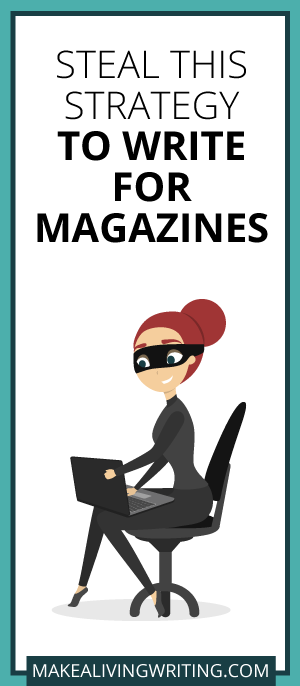
It’s the dream for a lot of freelance writers.
Maybe you’ve got your sights set on getting published in a glossy consumer magazine with millions of readers.
You read every issue. You study the headlines, writing style, and topics. And you think about story ideas for your dream magazine…a lot.
That’s a start. But how do you turn your story ideas into an assignment with a contract, your byline in a popular magazine, and a check in the mail?
One freelance writer took the challenge to get published in AARP: The Magazine…a highly-competitive niche magazine that pays $1/word.
At first she didn’t see a clear path to break in. But with a little effort, she discovered a strategy to write for magazines that really works, whether you’re just starting out or a pro.
Want to steal her idea to break into your dream pub? Here’s what you need to know:
Meet freelance writer Willi Morris

Williesha Morris
Willi Morris wasn’t always nabbing major magazine assignments. But she is now. She’s been writing for a living for more than a decade as an editorial assistant, journalist, and freelancer.
When she set her sights on writing for AARP: The Magazine, she decided nothing was going to stop her from landing an assignment. If you want to write for magazines,” says Willi, “here’s the secret. Be persistent.”
We caught up with Willi Morris on a recent Freelance Writers Den podcast to learn more about how she landed that dream assignment and what it’s like to write for magazines.
Q: How did you get into magazine writing?
A: I’ve been writing off and on since I was in college. I got my degree in journalism, and I was a journalist for a few years. I left the industry about 10 years ago, because I knew it was on a decline.
Then about six years ago, I moved to Alabama, and kind of fell back into writing with regional magazine. The editor’s encouragement really helped me do more freelancing. And Carol’s blog was a constant source of motivation to keep going.”
Q: What type of magazine writing do you like the most?
A: I enjoy doing feature profiles, because I love interviewing people. It’s interesting getting to know them. Right now, I’m trying to move towards doing more long-form content like case studies, which takes interviewing skills.
Q: What made you decide to pitch AARP?
A: Well, you know, Wikipedia was my friend one day. So I decide, “Hey, let’s check out magazine circulation by numbers.” And I was kind of surprised that it was AARP. I realized it has a huge audience. I had no idea how I was going to be able to break into the magazine. But it kind of became a goal of mine for several years.
Q: What was your first step to breaking into AARP?
A: When I checked up on an editor I worked with from a couple years ago, I realized she was working for AARP. So I sent her an InMail: “You’re working for AARP now. That sounds cool. What are you doing?” And that’s pretty much how it started. It feels like a fluke, but reaching out to her like that was really more intentional.
I only interacted with her a couple of times over a few months. And very randomly, I got a voicemail saying: “Hi, this is so-and-so from AARP. I want to talk to you about what we’re working on next.” I was aghast. I had no idea she even remembered that I emailed her.”
Q: What kind of story ideas did you pitch AARP?
A: I emailed her a lot of traditional pitches after that, like how to be a leader of black millennials, mental health topics, social media. Very reported assignments.
And then she came to me about doing personal essays for women of color between 35 to 45 years old.
Q: What do you think about accountability partners for writers?
A: My accountability partner, Ayelet Weisz, used to be a Den member and moderator. I don’t think I would have gotten the AARP gig without her. I wouldn’t have spend so as much time on LinkedIn marketing, but that’s what she was pushing me to do.
Without that, I probably wouldn’t have noticed that the editor I worked with in 2013 had moved magazines. It was really because of her encouragement that I was able to get the assignment.
Q: If you want to write for magazines like AARP, what advice can you give other freelancers?
A: Persistence is everything. Even if you feel like you’re being a little bit annoying by following up on a pitch, you
probably aren’t. Just be really brief: “Hey, I wanted to see what you’re up to.” Be brief, kind, and persistent. That means a lot to editors.”
If you’re afraid to send a pitch, do it anyways. I’ve been doing this for a really long time, and you never stop being scared. It’s part of the process.
Be a writer, not a waiter
If you’ve been sitting on a solid idea for a magazine article, for days, weeks, months, or maybe even years, what are you waiting for. Write that query letter. Send it off. Repeat the process until you’ve landed an assignment. And keep going until you get a “yes” from your dream pub. Be a writer, not a waiter. That’s the secret to freelance success.
Want to write for magazines? Let’s discuss in the comments below.
Evan Jensen is the blog editor for Make a Living Writing. When he’s not on a writing deadline or catching up on emails, he’s training to run another 100-mile ultra-marathon.










